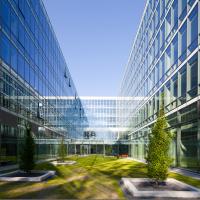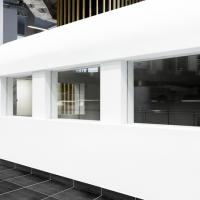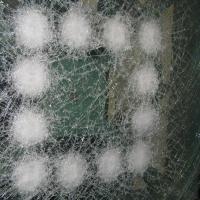
Date: 29 September 2017
The ability of glass to prevent the spread of fire throughout a building is one of its most important features.
Technology has progressed rapidly in recent years in terms of the ability of glazing to stand up to fire for extended periods of time. Alongside this, the use of larger pane sizes can now be used in settings at risk of fire, and can deliver high levels of clarity, while maintaining the required safety levels.
With this in mind, it’s essential that architects and specifiers know how to specify fire-resistant glazing.
Guidance for the levels of fire-resistance required when glass is positioned in different areas within a building are detailed part of Building Regulations Approved Document B (AD B).
The purpose of these requirements is to ensure that fire is contained within the space of origin, and the spread of smoke and flames is inhibited, ensuring those inside can evacuate safely.
The partitions separating compartments or rooms must achieve specific periods of fire resistance, meaning the fire-resistant performance of any glazing in such walls is crucial.
A full copy of a recent Pilkington report, containing a round-up of the current requirements of AD B and a look at leading fire-resistant glass, is available at www.pilkington.co.uk/fire.
To get involved in Fire Door Safety Week, join in the conversation with the hashtag #FireDoorSafetyWeek and visit the website for more details www.firedoorsafetyweek.co.uk.
 600450
600450















Add new comment